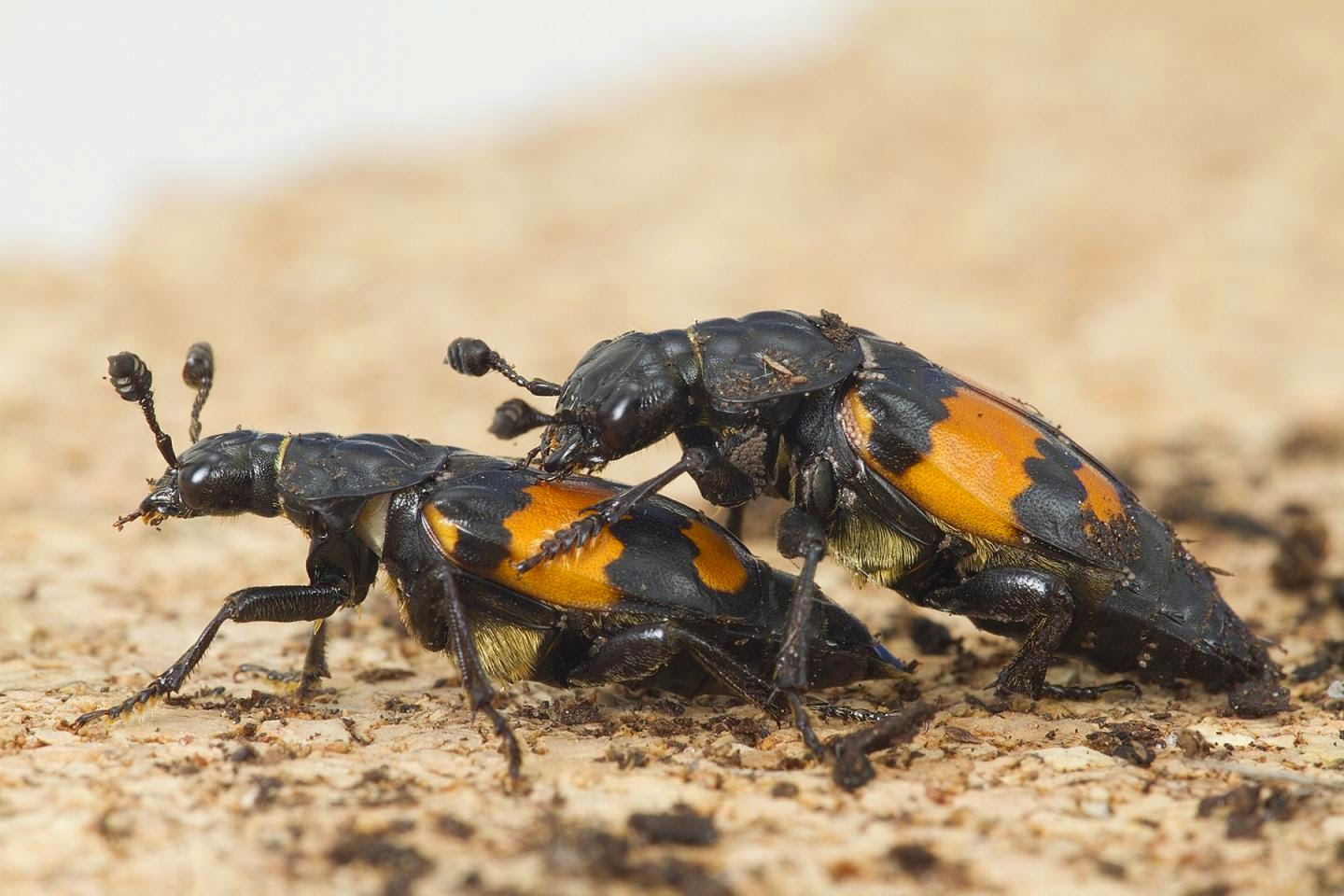| Online: | |
| Visits: | |
| Stories: |

| Story Views | |
| Now: | |
| Last Hour: | |
| Last 24 Hours: | |
| Total: | |
Male Beetles That Have More Sex Are More Insecure, Study
The study, published in the journal Evolution, provides new evidence that the social sensitivity of male behavior is linked to how often male beetles mate.
As a consequence, a dominant male and female pair, known as “resource holders” are usually established, who process the carcass and use it to raise their young. However, females and males who are not resource holders can adopt alternative reproductive tactics to increase the probability of their reproductive success. Subordinate females may lay eggs near the carcass and subordinate males adopt a “satellite” tactic, sneaking copulations with females. Females mating with multiple males creates uncertainty over paternity.
Dr Nick Royle, of the Centre for Ecology and Conservation at the University of Exeter, said: “What is really fascinating is that this social sensitivity has evolved in response to selection on mating behaviour: males that have more sex really are more insecure about their social status. Our results therefore provide valuable insights as to how behavioral plasticity evolves.”
The researchers artificially selected burying beetles for either high mating rates or low rates. High mating rates offer paternity protection, i.e., the more you mate the more likely you are to be the father.
They found that beetles selected to mate at a high rate were more sensitive to how much larger or smaller than competitor males they were when they were a resource-holder compared to males selected for low mating rate: rapidly ramping up dominant behavior when larger, but scaling down dominant behavior when smaller, than their rival.
As Dr Mauricio Carter explained: “Such flexibility of behavior in response to a change in social context is a common, but relatively poorly understood, feature of organisms. Plasticity of behavior is important because it allows organisms to respond rapidly to changes, increasing the persistence of populations in the face of environmental fluctuations. Our research increases our understanding of this important process that helps organisms adapt to changes in their environment.”
Contacts and sources:
Source: http://www.ineffableisland.com/2015/03/male-beetles-that-have-more-sex-are.html




